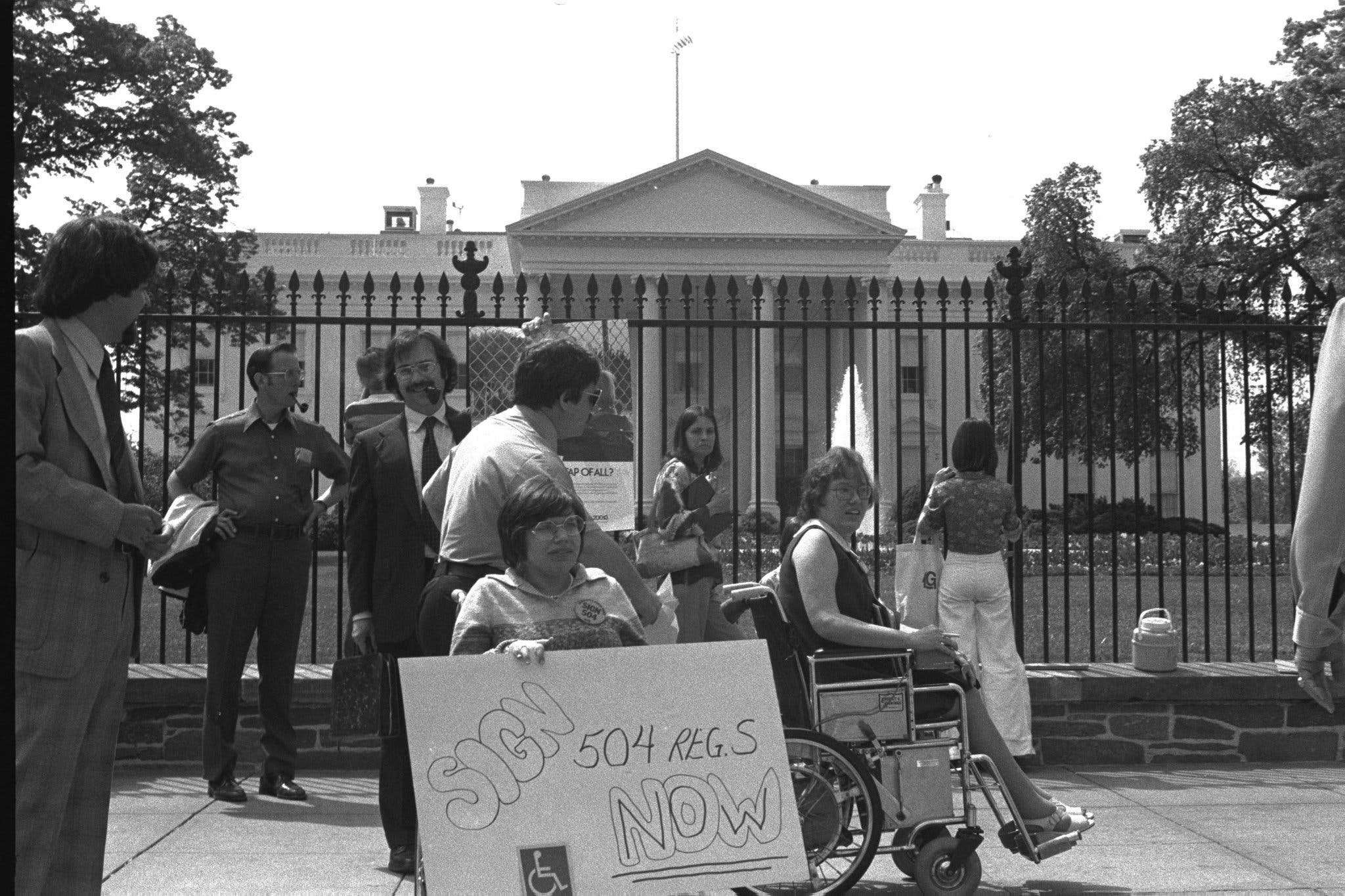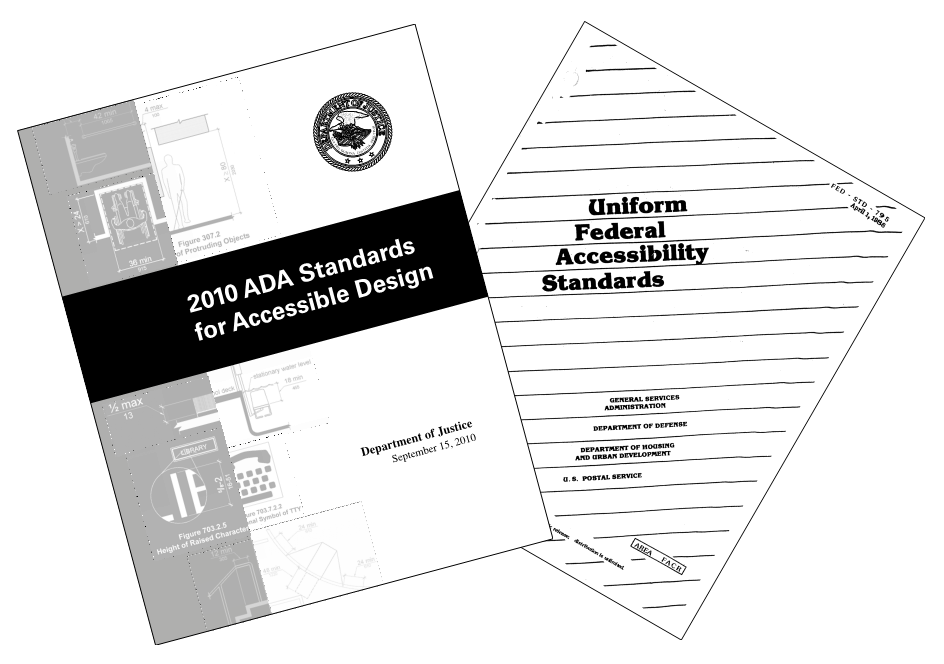

Blog
Our accessibility consultants answer the most frequently asked questions about Section 504 and how to apply it to residential projects.

Laws and codes governing accessibility ensure that the built environment is designed and constructed to serve its current and future occupants.
The first step in the design process is to determine which disability rights laws and building codes apply to your project. One such law is Section 504 of the Rehabilitation Act of 1973. When does Section 504 apply and how do you ensure that your project meets all relevant requirements?
At Steven Winter Associates, our accessibility consultants help our clients comply with every regulation that applies to their project, whether it’s a new construction or a renovation. Below, we pooled our knowledge to answer the most frequently asked questions about Section 504 and how to apply it to residential projects.

Section 504 is a law that prohibits federal government entities from discriminating against people based on disability in any program or activity that receives federal financial assistance.
All federal agencies (and the US Post Office) have their own Section 504 regulations. For example, the US Department of Education’s (ED’s) Section 504 regulations apply to school programs and activities funded by the ED.
Similarly, the US Department of Housing and Urban Development’s (HUD’s) Section 504 regulations apply to programs and activities funded by HUD. If HUD funding is provided to a recipient for the purposes of housing development or alterations, then according to HUD’s Section 504 regulations, the recipient must ensure that the housing development or alterations project is accessible to people with disabilities.
Image source: The New York Times
As a matter of federal law, Section 504 applies to a housing project when HUD funding is provided. Funding can take many forms, such as assistance provided through HUD’s HOME program and funding through a Community Development Block Grant, among others.
Section 504 also applies when it is triggered by local agency requirements as a matter of local law.
For example, the Department of Housing Preservation and Development (HPD) in New York City and the Department of Housing and Community Development (DHCD) in Washington D.C. and Maryland require compliance with Section 504, regardless of whether Section 504 is triggered by HUD as a matter of federal law.
It is important to note that determining whether your project is subject to Section 504 as a matter of federal and/or local law is a critical first step. Just because federal funding is not provided to a project, that does not mean that Section 504 can automatically be discounted. It is important to dig deeper into local agency requirements because many projects are subject to Section 504 under local law only.
Low Income Housing Tax Credits alone do not trigger Section 504 as a matter of federal law; triggering Section 504 on a LIHTC project would require another channel of HUD assistance
However, Maryland requires compliance with Section 504 for any project in the state that receives LIHTCs. In this instance, even though Section 504 does not apply as a matter of federal law, it applies to satisfy the legal requirements of the LIHTC program in Maryland.
Similarly, HPD in New York City triggers the requirements of Section 504 for any project that moves through the local agency, regardless of whether Section 504 compliance is required under federal law.
Ascertaining whether Section 504 is triggered by a local agency and/or the federal government via HUD-funding is critical because it allows the project team to determine the technical standard used to demonstrate compliance with Section 504.

In HUD’s Section 504 regulations at Section 8.32, the Uniform Federal Accessibility Standard (UFAS) is identified as the safe harbor document to be applied to any HUD-assisted design, construction, and/or alterations project.
UFAS is an older standard dating back to the late 1980s that includes criteria for making HUD-assisted projects accessible. Many of the criteria don’t align with those included in other accessibility standards, including the recent editions of the ICC A117.1 Standard for Accessible and Usable Buildings and Facilities referenced by the International Building Code (IBC) and the 2010 ADA Standards for Accessible Design referenced by the Americans with Disabilities Act (ADA).
The project is subject to the A117.1 Standard under the IBC and all areas serving the leasing office and parking garage are subject to the 2010 ADA Standards under the ADA.
Section 404, Doors, Doorways and Gates, in the A117.1 Standard aligns with criteria at Section 404, Door, Doorways and Gates included in the 2010 ADA Standards. Criteria that apply to doors, doorways, and gates are the same in both standards making the design of those elements simple.
Now, let’s assume that the same project receives HUD funding. On top of the A117.1 and 2010 ADA Standards, the project is subject to UFAS under HUD’s Section 504 regulations.
Criteria for doors are included at UFAS Section 4.13, but requirements are not perfectly aligned with those contained in Section 404 of the more recent standards. Toggling between the requirements in the outdated UFAS Standard and the more recent and aligned standards, i.e., A117.1 and the 2010 Standards, increases the complexity of the design process.
Until HUD eventually updates its Section 504 regulations to eliminate reference to UFAS as the charging standard, UFAS still stands. However, in response to the public’s request to update the UFAS standard referenced by HUD’s Section 504 regulations to better align it with more recent accessibility standards, HUD approved use of the 2010 ADA Standards (with 10 exceptions) in lieu of UFAS to demonstrate compliance with Section 504. In a notice published in the Federal Register in 2014, HUD permits recipients of HUD funding to use either UFAS or the more recent 2010 ADA Standards.
Good news, right? Well, almost.
Because HUD has no effect on local agency program requirements, the 2010 ADA Standards cannot be used in lieu of UFAS where local agency requirements specify and require use of UFAS to demonstrate compliance with Section 504.
Back to our earlier example, the Low Income Housing Tax Credit project in Maryland is required to comply with UFAS as a matter of meeting the State’s LIHTC program requirements, regardless of whether HUD permits use of the 2010 ADA Standards as a matter of compliance with federal law. In other words, although the 2010 ADA Standards could be used to satisfy federal Section 504 requirements, local law has not yet adopted the more recent standard.
In this instance, because the 2010 ADA Standards cannot be used to comply with State’s LIHTC program, it makes the most sense to use UFAS to comply with the local and federal Section 504 requirements.
Only when the local jurisdiction specifically permits use of the 2010 ADA Standards in lieu of UFAS to demonstrate compliance with Section 504 can you choose to use the more recent 2010 ADA Standards. Once you have determined that the use of either standard is permitted, it is worth considering the following when deciding between UFAS and the 2010 ADA Standards:
If yes, it may make sense to select the 2010 ADA Standards.
If no, it may make sense to select UFAS, especially if your chosen safe harbor for Fair Housing Act (FHA) compliance is the Guidelines or the Design Manual, which reference the 1986 edition of the A117.1 Standard, which aligns well with UFAS.
HPD in NYC permits the 2010 ADA Standards to be used to meet Section 504 requirements that are triggered by the local agency. For HPD projects, it makes sense to apply the 2010 ADA Standards to meet HPD requirements because the same standard is permitted to be applied to HPD projects that are also subject to HUD’s Section 504 requirements.
And, because the building code in New York City references a the A117.1 standard to meet the City’s code requirements contained in Chapter 11: Accessibility, of the New York City Building Code, use of the 2010 Standards is further recommended because it is closely aligned with the A117.1 Standard.
When choosing the 2010 ADA Standards, it is important to remember to consult the 10 exceptions outlined by HUD in the Federal Register.
There are several differences between UFAS and the 2010 ADA Standards that can impact your design. When choosing between the two technical standards, it is important to consider your project’s specific needs.
For more information about when the 2010 ADA Standards can be used to meet Section 504 requirements or for help understanding the differences between the standards, we’re here to help! Click here to contact us.
Peter Stratton